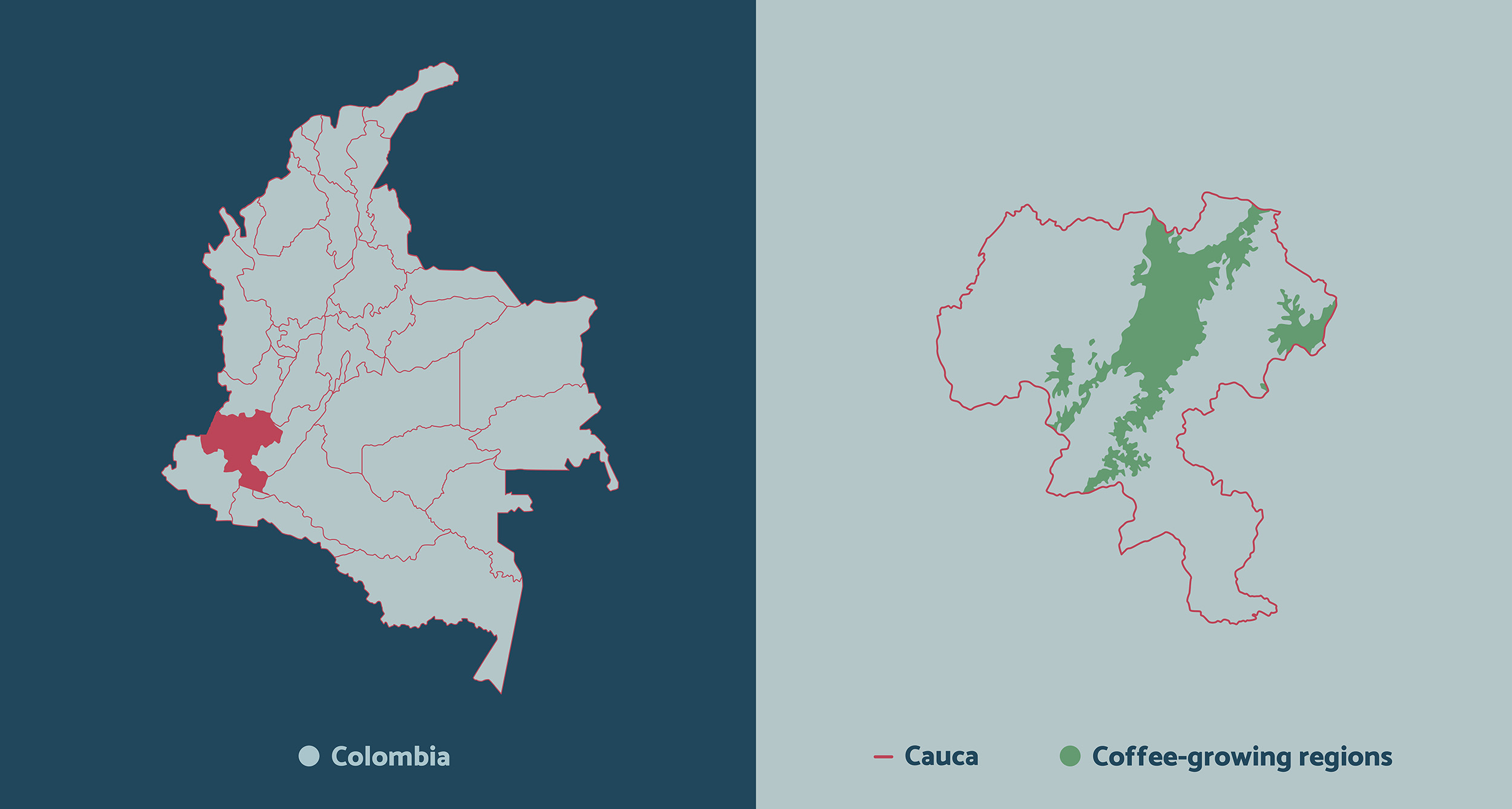Harvest: April–July (main crop), November–January (mitaca)
Elevation: 1,400–2,100 metres (4,600–6,900 feet) above sea level
Rainfall: 1,600–2,600 millimetres (63–102 inches)
Temperature: 17°C–22°C (63°F–72°F)
Cauca lies in Colombia’s southwest, the country’s second major coffee-producing region after the Eje Cafetero. Cauca encompasses a strip of the Pacific coastline in its northwest, while the southeastern tip of the department extends into the Amazon region. In between lies the Colombian Massif, the Andean highlands that dominate the southwest of Colombia.
 Popayán, Cauca’s capital, lies at the heart of the department’s coffee-producing region.
Popayán, Cauca’s capital, lies at the heart of the department’s coffee-producing region.
The Andes divide into the central and eastern cordilleras as they pass through Cauca, and much of the department’s coffee grows in the volcanic soils of the high plateau that lies between these two mountain ranges. The surrounding mountains shelter the plateau, giving Cauca’s coffee-growing regions a stable climate. The cool nights in the highlands slow ripening and help coffees from Cauca develop notable acidity and sweetness.
Thanks to these particular environmental conditions, coffee from Cauca was awarded a Denomination of Origin (DO) in 2011. The DO highlights Cauca’s stable climate as a major contributor to the department’s reputation for consistently high quality (Superintendency of Industry and Commerce 2022).
 Clouds loom over the mountains near Popayán.
Clouds loom over the mountains near Popayán.
According to the DO, coffee from Cauca can be expected to have high acidity, medium body, strong caramelised aromas, and some sweet and floral notes. Cauca produces some extraordinary coffee, as exemplified by a Castillo lot from Cauca that took third place in the 2021 Cup of Excellence (COE 2021).
As in much of Colombia, the traditional varieties Caturra and Typica have gradually given way to the rust-resistant hybrids Castillo and Colombia. Thanks in part to these high-yielding varieties,
